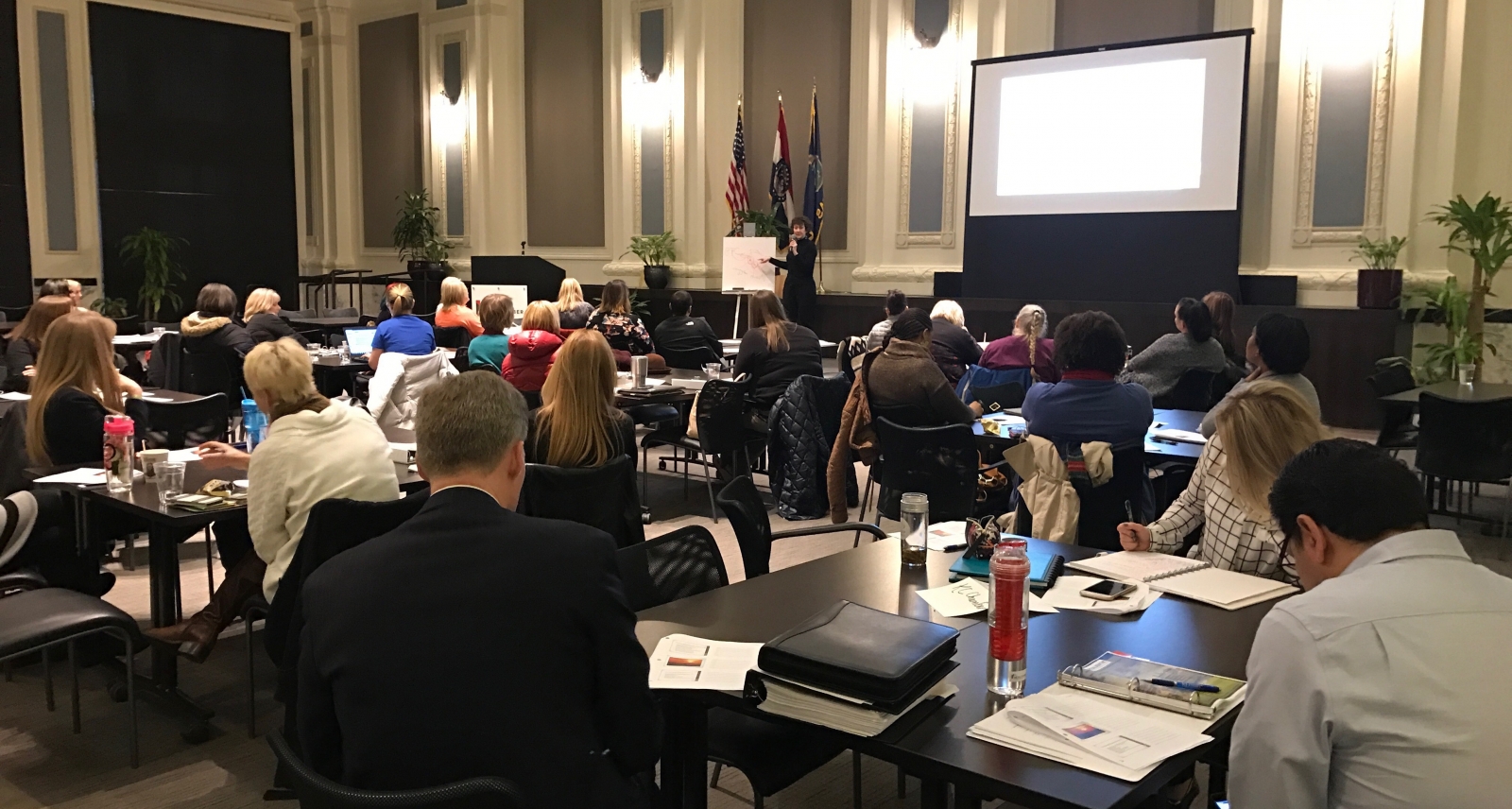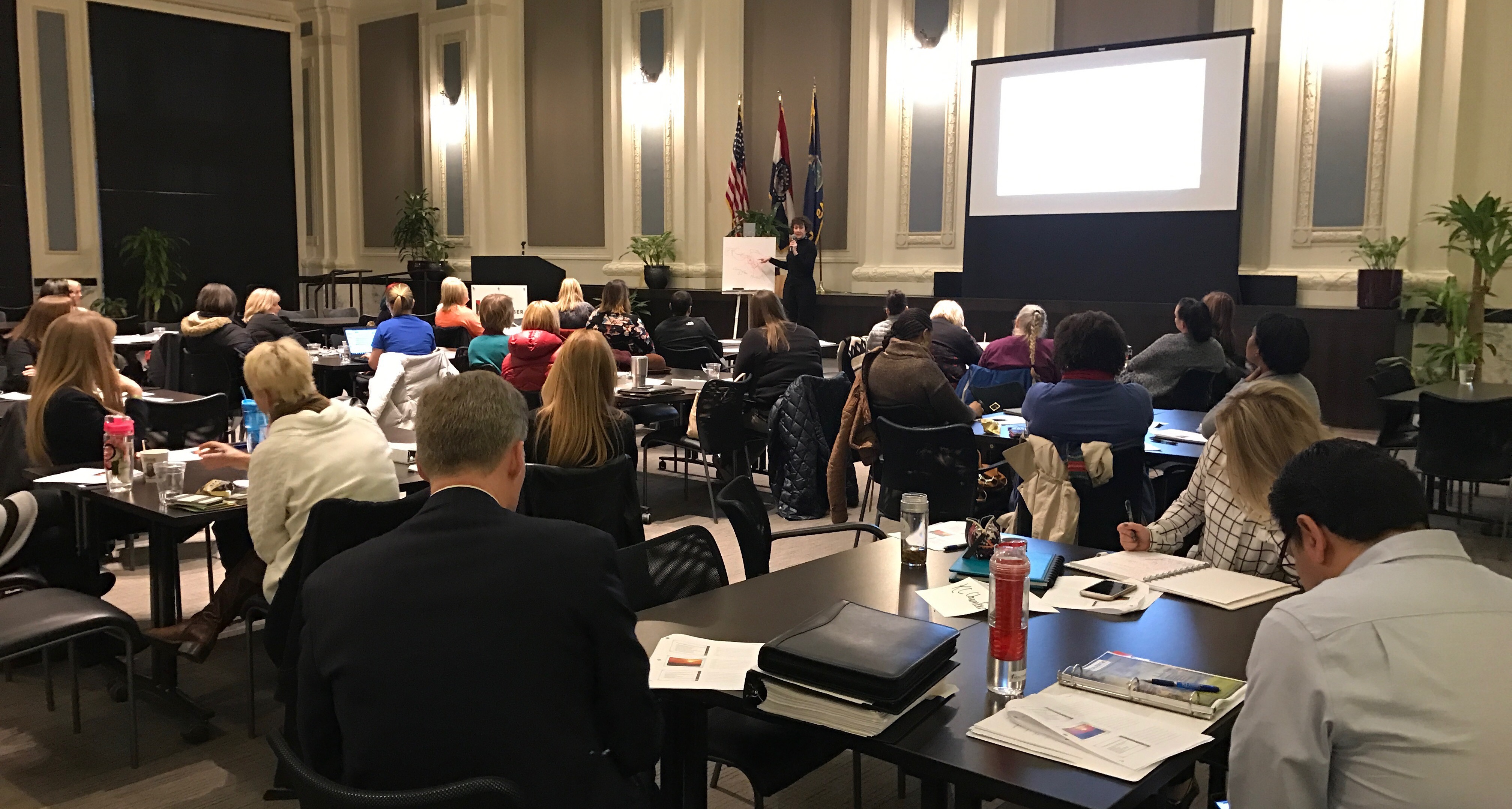NATIONAL ATR NETWORK SURVEY
Hundreds of ACEs, trauma, & resilience networks across the country responded to our survey. See what they shared about network characteristics, goals, and technical assistance needs.
What would a trauma-informed policy on staff absenteeism look like? How about a trauma-informed procedure for clocking in and clocking out? Would that be different for a hospital than, say, for a public school?
Questions like those—how trauma-informed theory translates to on-the-ground practice—were on the table during a recent learning collaborative session in Kansas City.
The collaborative, a project of the Resilient KC network, began in September 2016 to help teams from a range of organizations—in education, public health, mental health and business—share experiences, ask questions and build relationships in the growing adverse childhood experiences (ACEs) and resilience movement. “The learning collaborative is a stepping-stone to becoming trauma-informed,” says Jasmin Williams, coordinator of Resilient KC.
Seventeen hundred miles to the west, in the Columbia River Gorge, a similar learning collaborative has been meeting since 2012. There, the learning group grew from various agencies’ efforts to learn about and adopt the Sanctuary Model. “It served as a place to share what was working and what was hard,” says Claire Ranit, MARC project manager for the Resilience Network of the Gorge (formerly Creating Resiliency in the Columbia River Gorge).
Now the group includes people working in public health, mental and physical health, college extension services, child welfare, domestic and sexual violence services and Head Start, among others. Some members of the Columbia Gorge learning collaborative are using the Sanctuary Model; others are trying different tools to pursue trauma-informed care.
Both areas’ learning collaboratives aim to enact what they believe. Each session begins with a “community meeting” in which participants answer three questions: How are you feeling? What’s your goal for this meeting? Who can you look to if you need support or help?
“It’s a space where we can actually practice some of the things we’re committed to, like social learning and open communication,” says Ranit. The conversations, on topics proposed by collaborative members and facilitated by network leaders, also help build community within and between different agencies.
“After an organization shares what they’ve been doing, another will say, ‘Oh, that sounds awesome; how can we do that, or how can we work together?’” Williams notes.
At first, Kansas City MARC leaders aimed to get learning collaborative participants on the same page. A three-day training introduced foundational concepts: trauma, triggers, and biology; resilience and self-care; action planning at the organizational level (see some of the tools they use). Follow-up sessions covered topics such as trauma-informed human resource practices, community collaboration and outcome measures.
Then, sector-specific teams delved into topics relevant to their practice: school personnel learned about storytelling and sensory tools such as yoga and movement; healthcare organizations studied trauma-informed supervision and self-care activities for staff.
The Kansas City learning collaborative meets every other month, for two hours, in the Chamber of Commerce board room; it’s a large group—14 organizations are represented, with three to five people from each—so the community meeting portion may happen in smaller groups to foster more personal connection.
Columbia River Gorge actually has two collaboratives, each of which meets once a month. As in Kansas City, leaders provide an agenda, an information packet and reminders about any follow-up. And both collaboratives include time for open conversation in which members share their organizations’ action plans, discuss challenges and learn about new tools for addressing trauma and boosting resilience both with staff and with the people they serve.
Williams says it’s critical to gain leadership support from organizations that participate in the learning collaborative, and to make sure that each participating agency sends enough staff to make an impact. “That way, you have a group within the organization that is learning the same material at the same time, able to bounce information back and forth, able to talk about it with their peers.”
As with any ongoing group, participation in the learning collaboratives can vary, say Ranit and Williams. Both collaboratives aim to share leadership and responsibility, include more hands-on activities and encourage participants to stay in touch outside of the regular meeting times.
In Kansas City, Williams hopes to provide more site visits and technical assistance to organizations that wish to put trauma theory into practice. Ranit is developing a way for participants in the learning collaborative to visit one another’s sites, then report back to the larger group about what they’ve learned.
When the Kansas City learning group began, participants took the Attitudes Related to Trauma-Informed Care survey; they’ll take it again at the conclusion of the one-year collaborative. But already, there are signs that the collaboratives’ work is rippling outward.
A school district in the Kansas City area is examining its staff policies through a trauma-informed lens. Meanwhile, in the Columbia River Gorge, implementation of the Coordinated Care Organization legislation in Oregon—made possible by a Centers for Medicare & Medicaid Services waiver within the Affordable Care Act—calls for an every-other-year Community Health Assessment. Agencies participating in the learning collaborative banded together and advocated for the most recent survey to include questions that specifically—and sensitively—addressed trauma and adversity.
“I can’t imagine trying to make policy changes without having this kind of shared knowledge available in our community,” Ranit says.
The mission of the Center is to drive science-based innovation that achieves breakthrough outcomes for children facing adversity. Visit the site to explore the key concepts of child development: brain architecture, toxic stress, resilience, serve & return, and executive function & self-regulation.
The Brain Architecture Game is a tabletop game experience that builds understanding of the powerful role of experiences on early brain development—what promotes it, what derails it, with what consequences for society.
A Community Meeting is a deliberate, repetitive transition ritual intended to psychologically move people from some activity that they have been doing into a new group psychological space preparing the way for collective thought and action.
The ARTIC is one of the first psychometrically valid measure of trauma-informed care (TIC) to be published in the peer-reviewed literature. The ARTIC is a measure of professional and paraprofessional attitudes favorable or unfavorable toward TIC. It was developed collaboratively by the Traumatic Stress Institute of Klingberg Family Centers and Dr. Courtney Baker at Tulane University.
The ProQOL is the most commonly used measure of the negative and positive affects of helping others who experience suffering and trauma. The ProQOL has sub-scales for compassion satisfaction, burnout and compassion fatigue.
Anndee Hochman is a journalist and author whose work appears regularly in The Philadelphia Inquirer, on the website for public radio station WHYY and in other print and online venues. She teaches poetry and creative non-fiction in schools, senior centers, detention facilities and at writers' conferences.
